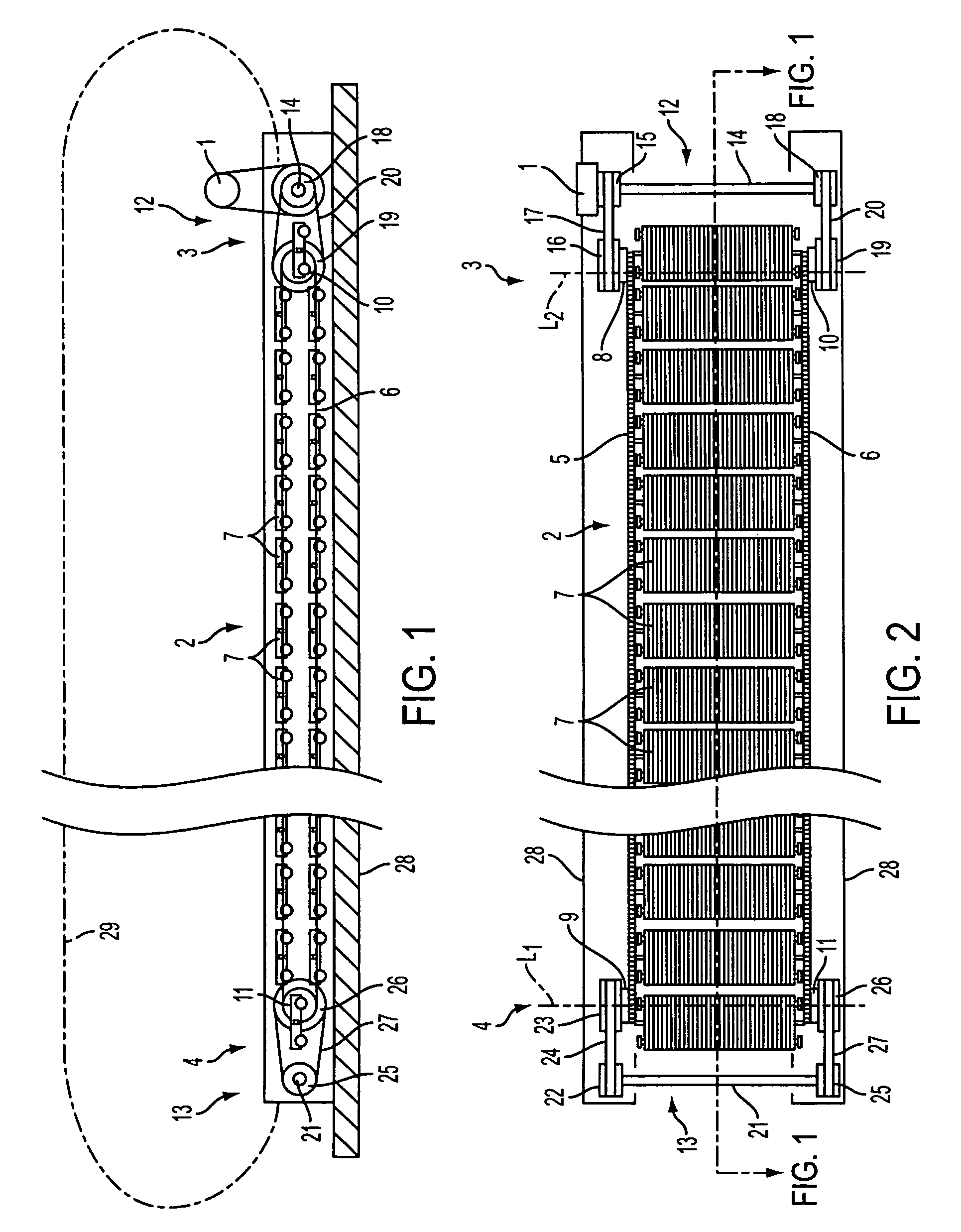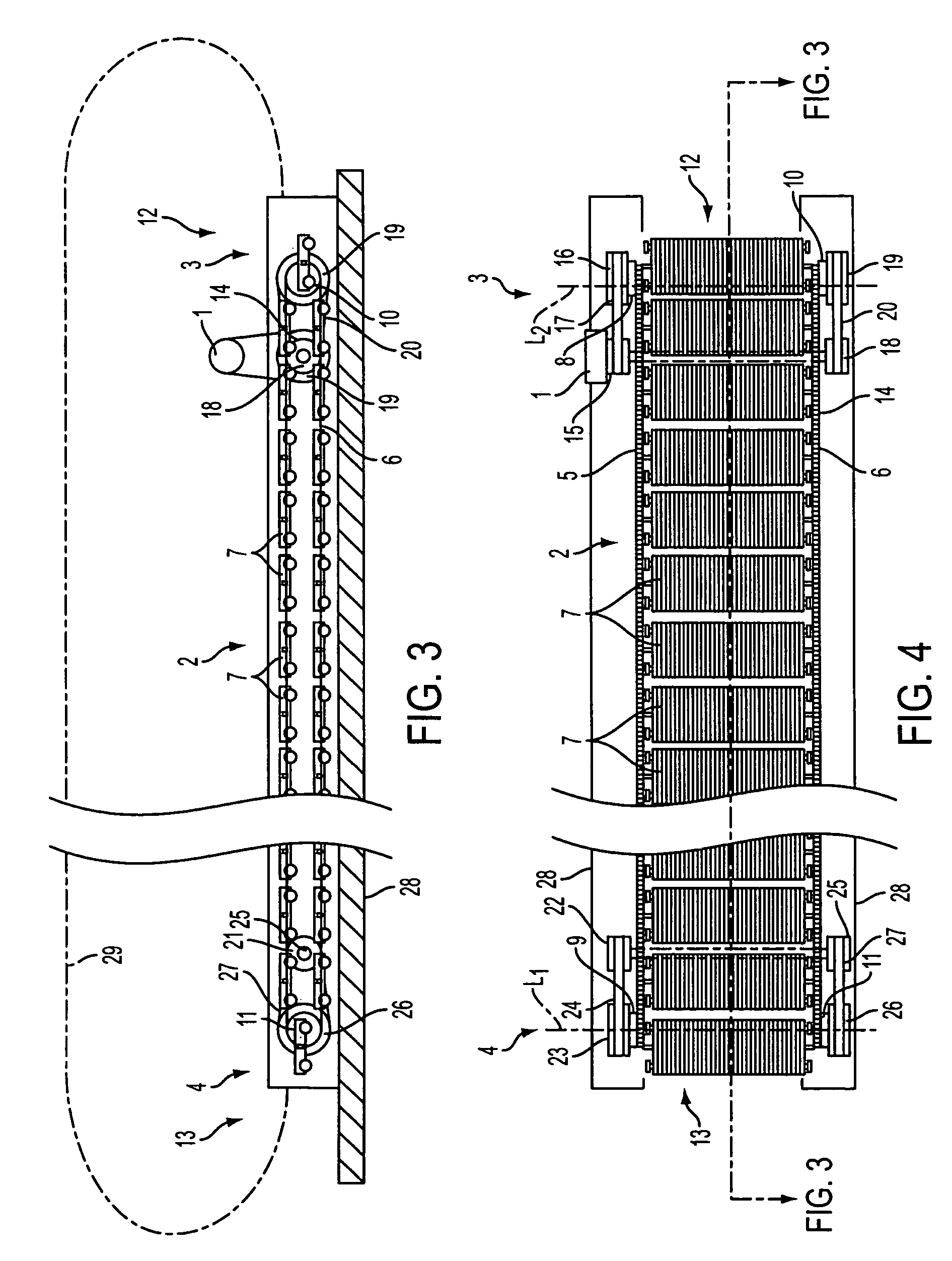Travelator, moving ramp or escalator
a technology of moving ramps and escalators, which is applied in the direction of escalators, conveyors, transportation and packaging, etc., can solve the problems of long transport distances, high cost, and high cost of drive elements, and achieves low cost, low cost, and long transport lengths.
- Summary
- Abstract
- Description
- Claims
- Application Information
AI Technical Summary
Benefits of technology
Problems solved by technology
Method used
Image
Examples
Embodiment Construction
[0024]FIGS. 1 and 2 illustrate a horizontal travelator having a low-construction height mounted on a fixed base, such as a floor or other support, which means that no pit needs to be made in the fixed base for the travelator machinery. A travelator having a low construction height is described, for example, in co-owned U.S. application Ser. No. 11 / 491,495, filed Jul. 24, 2006, the disclosure of which is incorporated herein by reference. In the following description of an example, the invention is described in connection with a travelator, but it is obvious that corresponding principles of the invention can be applied to moving ramps and escalators as well.
[0025]The illustrated travelator comprises a conveyor 2, which in this case is a pallet conveyor. The conveyor 2 is mounted on a conveyor frame 28. The conveyor frame 28 lies on a floor base throughout its length. Secured to the conveyor frame 28 are usually two balustrades 29 extending alongside the conveyor 2 throughout its lengt...
PUM
 Login to View More
Login to View More Abstract
Description
Claims
Application Information
 Login to View More
Login to View More - R&D
- Intellectual Property
- Life Sciences
- Materials
- Tech Scout
- Unparalleled Data Quality
- Higher Quality Content
- 60% Fewer Hallucinations
Browse by: Latest US Patents, China's latest patents, Technical Efficacy Thesaurus, Application Domain, Technology Topic, Popular Technical Reports.
© 2025 PatSnap. All rights reserved.Legal|Privacy policy|Modern Slavery Act Transparency Statement|Sitemap|About US| Contact US: help@patsnap.com



